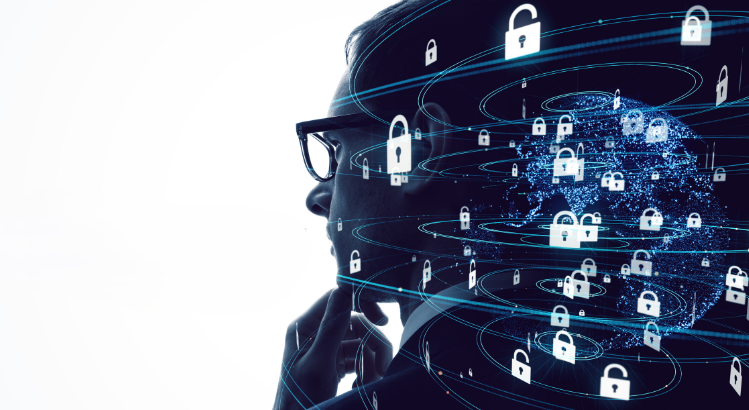
During October, we’ve seen both ‘International Week of Happiness At Work’ and ‘World Mental Health Day’ acknowledged, emphasising again the importance of our professional wellbeing.
Given how much of our time is spent at work, cultivating wellbeing and happiness there isn’t just a professional goal – it’s a critical component of your overall health and professional success. In fact, according to The Workforce Institute at UKG, managers have just as much an impact on our overall mental health as spouses.
For cyber security professionals, who face a unique blend of high stress, demanding tasks, and an ever-evolving threat landscape, prioritising happiness isn’t a luxury – it’s a necessity for thriving both personally and professionally.
A Gallup study found that employees who feel their employer cares about their overall wellbeing are 36% more likely to be thriving in their lives overall. This direct link between professional and personal wellbeing underscores the profound impact that a supportive, positive work environment has on our lives outside of the office.
The Unique Challenges of Cyber Security
The cyber security field is a high-stakes environment. Professionals often work in a constant state of vigilance, managing security alerts, responding to breaches, and staying ahead of sophisticated threats. This “always-on” nature can lead to significant stress, and burnout can make practitioners feel like first responders in the digital space.
A supportive work culture that acknowledges and addresses these unique stressors is essential. When you feel valued, trusted, and empowered, you’re better equipped to handle pressure. A positive environment can mitigate the risks of burnout and help you maintain the sharp focus and decision-making skills needed for the job.
Why Wellbeing at Work Matters
Beyond the personal benefits, prioritising wellbeing has tangible professional and organisational advantages. Happy employees are more engaged, resilient, and productive. Research by the University of Oxford found that happy workers are 13% more productive and are more likely to stay with their organisation.
For a sector grappling with a significant talent and experience shortage, this is a crucial point. A workplace that fosters happiness becomes a magnet for top talent and a deterrent to employee turnover. When professionals feel supported, their mental clarity improves, which helps prevent the human errors that contribute to the majority of cyber breaches.
Cultivating a Culture of Wellbeing
For You:
- Set clear boundaries: It’s easy for work to bleed into personal time. Establish and maintain clear boundaries between your work and personal life. For example, turn off work notifications after hours and avoid checking emails on your rest days. This helps prevent burnout and preserves your mental energy.
- Take regular breaks: The intense focus required for cyber tasks can be mentally draining. Step away from your screen for a few minutes every hour. Stretch, grab a glass of water, or grab some fresh air and talk a short walk. These small breaks can significantly improve your focus and reduce stress.
- Invest in your skills and development: Feeling stagnant can be a major source of unhappiness. Take ownership of your professional growth by seeking out training, certifications, or new projects that interest you. This not only makes you more valuable but also keeps you engaged and motivated.
- Build connections with your colleagues: A strong support network at work can make a world of difference. Build positive relationships with your team through non-work-related conversations, sharing successes, and offering help. This camaraderie can turn a stressful environment into a supportive one.
For Your Leaders and Teams:
- Prioritise work-life balance: Leaders should actively champion a culture that values work-life balance. Offer flexible work arrangements like remote work options or compressed workweeks. By modelling this behaviour, you show your team that their personal wellbeing is a priority.
- Recognise and reward contributions: Cybersecurity professionals often work behind the scenes. Implement a robust recognition programme that acknowledges both major wins and consistent, diligent work. Simple “thank yous,” public shout-outs, or performance-based bonuses can significantly boost morale.
- Encourage open communication: Create an environment where team members feel safe to voice concerns about workload or stress. Schedule regular one-on-one check-ins to discuss not just project progress, but also employee wellbeing. This builds trust and helps you identify potential burnout before it becomes a problem.
- Invest in wellbeing resources: Beyond standard health insurance, leaders can provide resources specifically tailored for high-stress roles. Offer access to EAPs or mental health services like therapy or counselling, and promote wellness programmes that encourage physical activity. These investments show a genuine commitment to the team’s holistic health.
These dates in the calendar are more than just another observance; they’re a call to action. By proactively focusing on wellbeing happiness, we can build a more resilient, innovative, and productive cybersecurity workforce, securing a brighter and more effective future for ourselves and our industry. Remember, a happy professional isn’t just a better employee – they’re a healthier, more fulfilled person.

